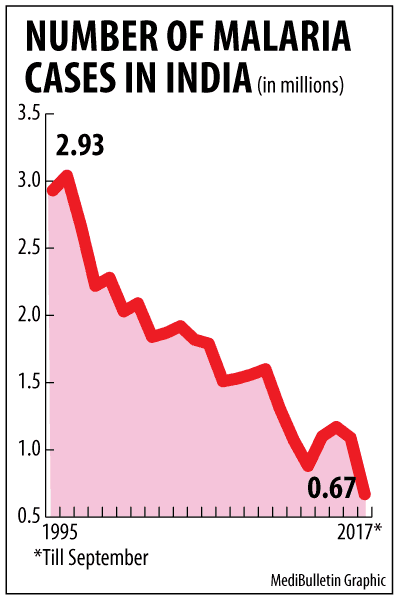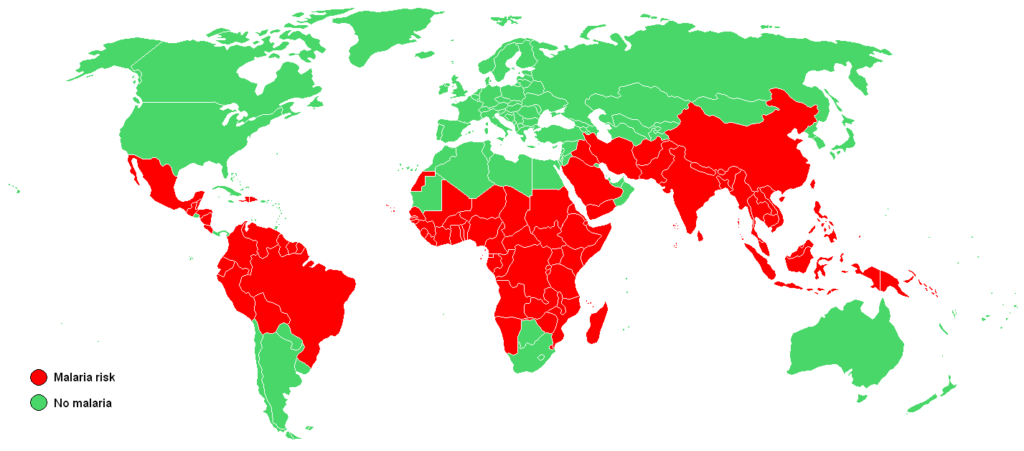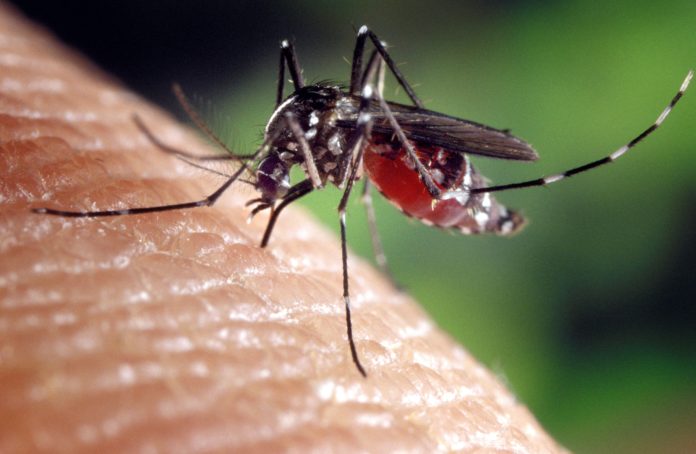The disease burden for malaria has been steadily going down but global reports say only a fraction of cases may be currently addressed
 One look at the India’s malaria figures since 1995 and there is no doubt that the country has done exceptionally well. From 2.93 million cases and 1151 deaths in 1995 to 0.67 million cases and 84 deaths in 2017 is no mean achievement by any standards.
One look at the India’s malaria figures since 1995 and there is no doubt that the country has done exceptionally well. From 2.93 million cases and 1151 deaths in 1995 to 0.67 million cases and 84 deaths in 2017 is no mean achievement by any standards.
Only global reports over all these years have red-flagged reporting deficiencies of malaria in India that remain unaddressed largely because there has never been official acceptance that these issues exist.
The World Malaria Report 2017 says: “Among 55 countries where the burden of malaria was estimated — from either adjustment of the routine data or the transformation of prevalence to incidence — the proportion of estimated cases reported by surveillance systems was lowest in Gabon (8 per cent) and highest in the Bolivarian Republic of Venezuela (84 per cent). Countries with weak malaria surveillance systems include India and Nigeria, two major contributors to the global burden of malaria, with 8 per cent and 16 per cent of cases, respectively, detected by the surveillance system.”
About 95% population in the country resides in malaria endemic areas and 80% of malaria reported in the country is confined to areas consisting 20% of population residing in tribal, hilly, difficult and inaccessible areas.
India has the highest malaria burden in the world outside sub-Saharan Africa. About 95% population in the country resides in malaria endemic areas and 80% of malaria reported in the country is confined to areas consisting 20% of population residing in tribal, hilly, difficult and inaccessible areas.

Official estimates suggest nearly 1 million malaria cases are reported annually across the country, but this is widely regarded an underestimate, as 60 to 80 per cent patients in urban areas are treated by private doctors or health establishments, most of whom do not notify cases. Although malaria is a notifiable disease, it is only voluntary notification; there are no penalties for doctors or hospitals not doing so. However India has in the last few years achieved a 40% reduction in incidence and 60% reduction in mortality.
Malaria is a potentially life threatening parasitic disease caused by parasites known as Plasmodium viviax (P.vivax), Plasmodium falciparum (P.falciparum), Plasmodium malariae (P.malariae) and Plasmodium ovale (P.ovale). It is transmitted by the bite of Anopheles mosquito.
It is of crucial importance that malaria reporting is foolproof because India last year unveiled a plan to eliminate the disease by 2027. The strategies include strengthening malaria surveillance, establishing a mechanism for early detection and prevention of outbreaks of malaria, promoting the prevention of malaria by the use of Long Lasting Impregnated Nets (LLINs), effective indoor residual spray and augmenting the manpower and capacities for effective implementation for the next five years.



[…] study published in mBio, the journal of the American Society for Microbiology, reported that the malaria causing parasite P. vivax doesn’t only circulate in the blood; it also takes up residence in […]